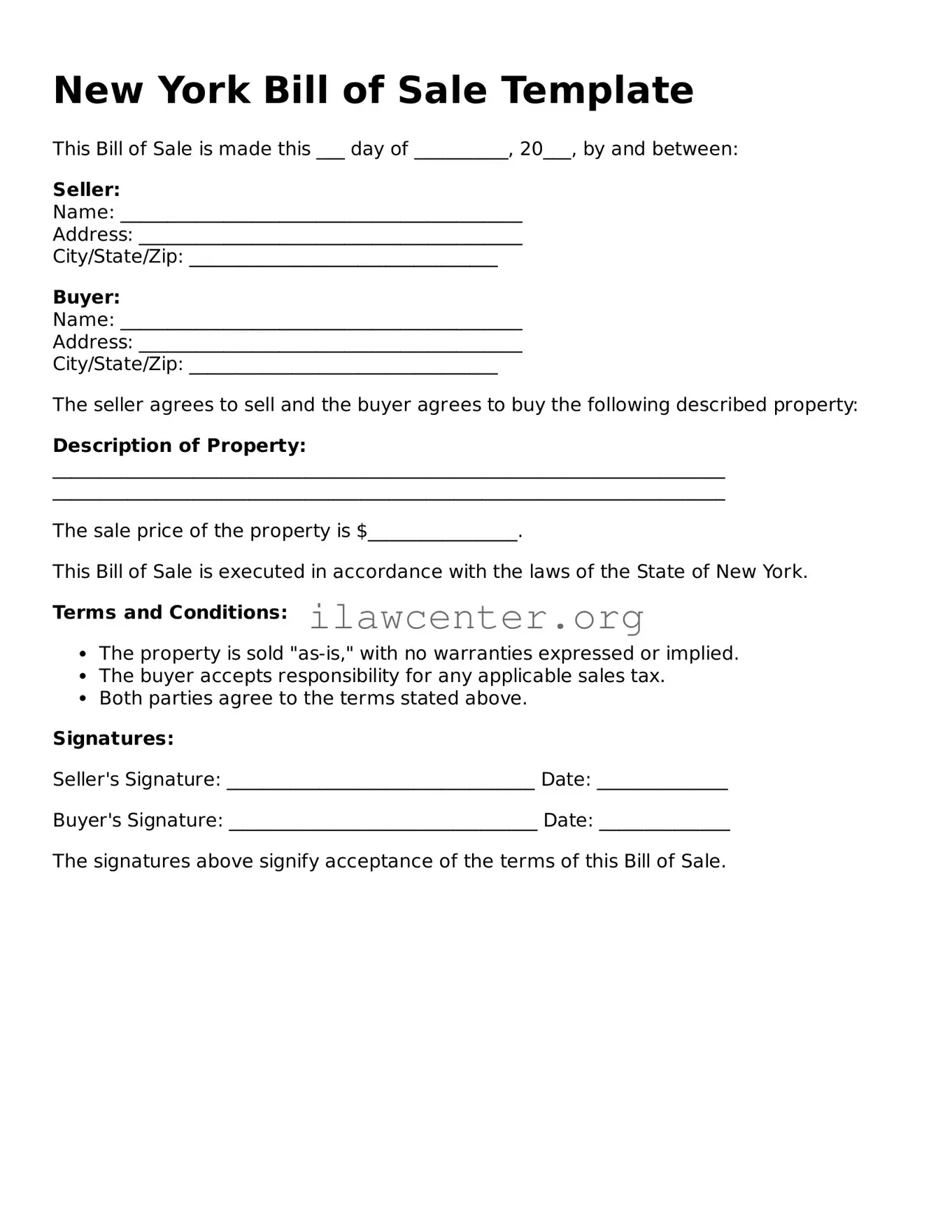What is a Bill of Sale in New York?
A Bill of Sale is a legal document that records the transfer of ownership of personal property from one person to another. In New York, it serves as proof of the transaction and includes important details about the buyer, seller, and the item being sold.
When do I need a Bill of Sale?
You need a Bill of Sale when selling or buying personal property, such as vehicles, boats, or equipment. It is especially important for high-value items. This document helps ensure both parties have a clear record of the transaction.
Is a Bill of Sale required in New York?
What information is typically included in a Bill of Sale?
A typical Bill of Sale includes details such as the names and addresses of the buyer and seller, a description of the item being sold, the sale price, and the date of the transaction. Both parties should sign the document to make it valid.
Do I need a notary for a Bill of Sale in New York?
In most cases, a Bill of Sale does not need to be notarized in New York. However, having it notarized can add an extra layer of authenticity and may be required by certain parties, such as vehicle registration offices.
Can I use a Bill of Sale for a vehicle in New York?
Yes, a Bill of Sale is frequently used for vehicle transactions in New York. It is essential for registering the vehicle and transferring ownership. After purchasing a vehicle, presenting the Bill of Sale to the Department of Motor Vehicles is crucial for completing the registration process.
How do I create a Bill of Sale?
You can create a Bill of Sale by using a template or drafting it yourself. Make sure to include all required information and ensure clarity. Many online resources provide printable templates that you can fill out with the necessary details.
What if the item sold has liens against it?
If there are liens against the item being sold, it's vital to disclose this in the Bill of Sale. Buyers should be aware of any existing financial obligations associated with the property to avoid future legal complications.
What should I do after signing a Bill of Sale?
Once both parties have signed the Bill of Sale, each should keep a copy for their records. The seller should also report the sale to any relevant authorities, especially for vehicles, to ensure proper registration and transfer of ownership.
